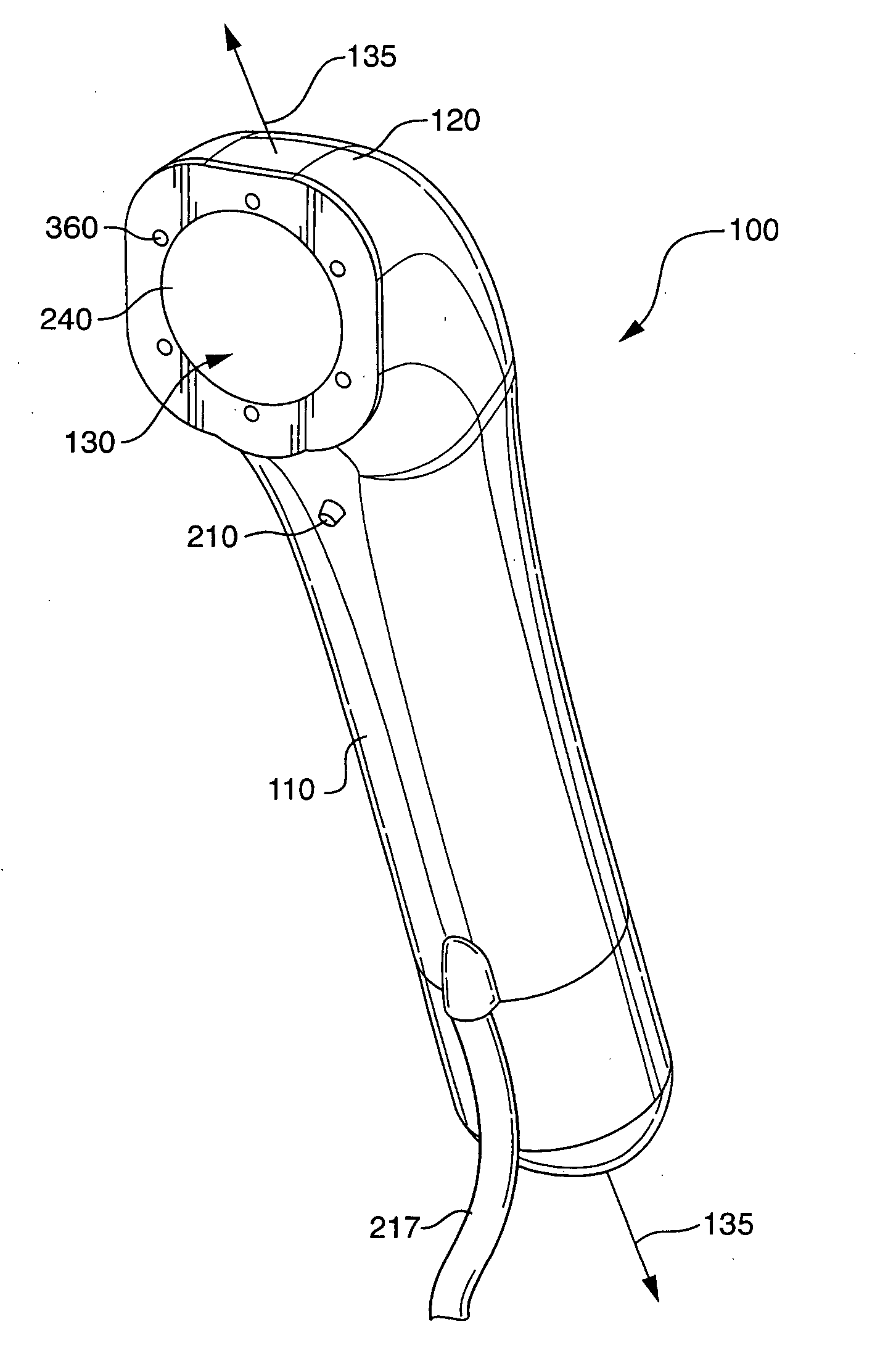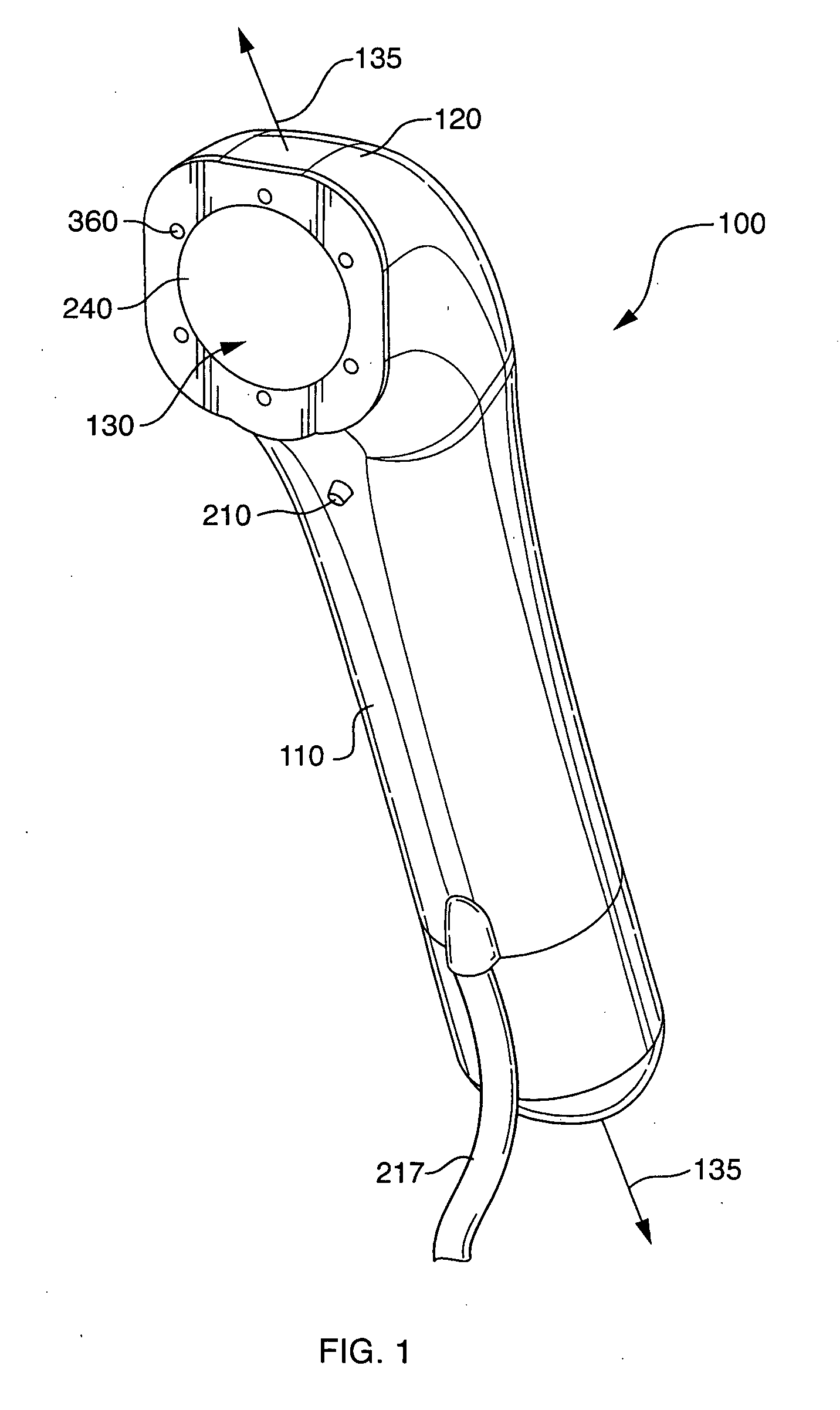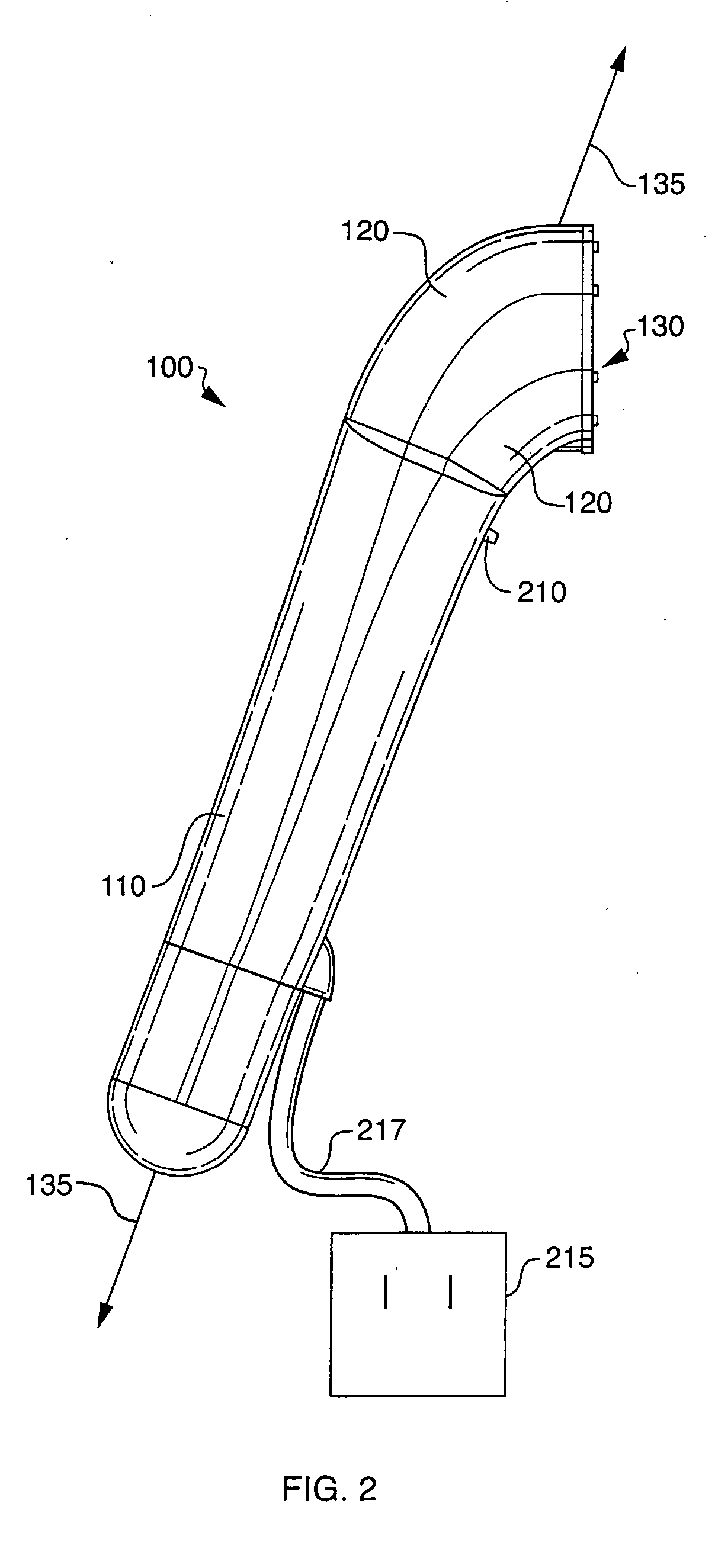Photocosmetic device
a photocosmetic device and optical radiation technology, applied in the field of electromagnetic radiation methods and apparatuses, can solve the problems of bulky and expensive cooling techniques, high-power optical radiation sources required for these treatments, and high cost, and achieve the effects of reducing the number of radiation sources
- Summary
- Abstract
- Description
- Claims
- Application Information
AI Technical Summary
Benefits of technology
Problems solved by technology
Method used
Image
Examples
Embodiment Construction
Photocosmetic Procedures in a Non-Medical Environment
[0057] While certain photocosmetic procedures, such as CO2 laser facial resurfacing, where the entire epidermal layer is generally removed, will likely continue for the time being to be performed in the dermatologist's office for medical reasons (e.g., the need for post-operative wound care), there are a large number of photocosmetic procedures that could be performed by a consumer in a non-medical environment (e.g., the home) as part of the consumer's daily hygienic regimen, if the consumer could perform such procedures in a safe and effective manner using a cost-effective device. Photocosmetic devices for use by a consumer in a non-medical environment may have one or more of the following characteristics: (1) the device preferably would be safe for use by the consumer, and should avoid injuries to the body, including the eyes, skin and other tissues; (2) the device preferably would be easy to use to allow the consumer or other ...
PUM
 Login to View More
Login to View More Abstract
Description
Claims
Application Information
 Login to View More
Login to View More - R&D
- Intellectual Property
- Life Sciences
- Materials
- Tech Scout
- Unparalleled Data Quality
- Higher Quality Content
- 60% Fewer Hallucinations
Browse by: Latest US Patents, China's latest patents, Technical Efficacy Thesaurus, Application Domain, Technology Topic, Popular Technical Reports.
© 2025 PatSnap. All rights reserved.Legal|Privacy policy|Modern Slavery Act Transparency Statement|Sitemap|About US| Contact US: help@patsnap.com



